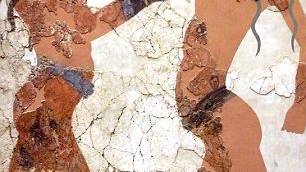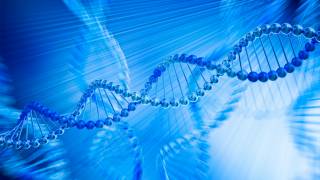The Minoans were Caucasian: DNA debunks longstanding theory that Europe’s first advanced culture was from Africa
Source: dailymail.co.uk
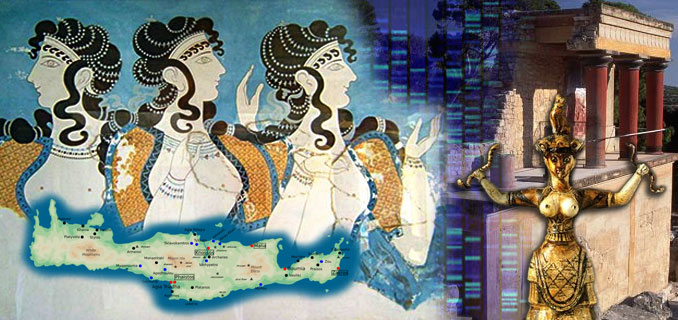
DNA analysis has debunked the longstanding theory that the Minoans, who some 5,000 years ago established Europe’s first advanced Bronze Age culture, were from Africa.
The Minoan civilisation arose on the Mediterranean island of Crete in approximately the 27th century BC and flourished for 12 centuries until the 15th century BC.
[Minoan Civilization]
But the culture was lost until British archaeologist Sir Arthur Evans unearthed its remains on Crete in 1900, where he found vestiges of a civilisation he believed was formed by refugees from northern Egypt.
Modern archaeologists have cast doubt on that version of events, and now DNA tests of Minoan remains suggests they were descended from ancient farmers who settled the islands thousands of years earlier.
These people, it is believed, are from the same stock that came from the East to populate the rest of Europe.
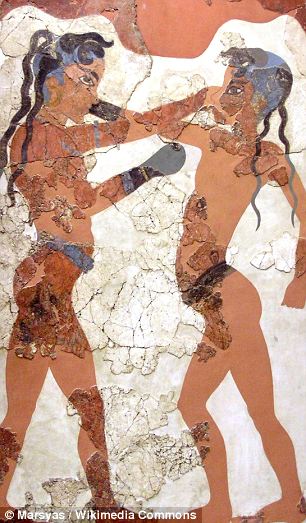
A Minoan fresco of children boxing: New DNA analysis has debunked the theory
that the Minoans were refugees from North Africa
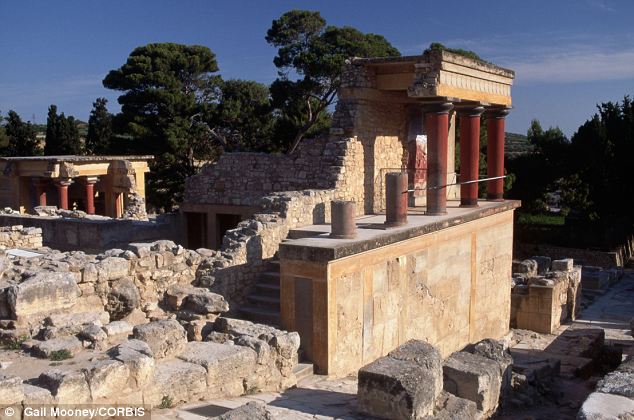
Minoan Palace Ruins at Knossos: The Minoan culture, Europe’s first advanced civilisation, arose on the Mediterranean island of Crete in approximately the 27th century BC and flourished for 12 centuries.
Evans set to work on Crete in 1900 with a team of archaeologists soon after the island was liberated from the yoke of the Ottoman empire, almost immediately unearthing a great palace.
He named the civilisation he discovered after the legendary Greek king Minos and, based on likenesses between Minoan artifacts and those from Egypt and Libya, proposed that its founders migrated into the area from North Africa.
Since then, other archaeologists have suggested that the Minoans may have come from other regions, possibly Turkey, the Balkans, or the Middle East.
But now a joint U.S. and Greek team has made a mitochondrial DNA analysis of Minoan skeletal remains to determine the likely ancestors of the ancient people.
Mitochondria, the energy powerhouses of cells, contain their own DNA, or genetic code, and because mitochondrial DNA is passed down from mothers to their children via the human egg, it contains information about maternal ancestry.
Findings suggest that the Minoan civilisation arose from the population already living in Crete, and that these people were probably descendants of the first humans to reach there about 9,000 years ago.
Further, they found, the remains have the greatest genetic similarity with modern European populations.
Senior researcher Dr George Stamatoyannopoulos, professor of medicine and genome sciences at the University of Washington, said the analysis showed these people probably came to the area from the East, not the South.
’About 9,000 years ago there was an extensive migration of Neolithic humans from the regions of Anatolia that today comprise parts of Turkey and the Middle East,’ he said.
’At the same time, the first Neolithic inhabitants reached Crete.
’Our mitochondrial DNA analysis shows that the Minoans’ strongest genetic relationships are with these Neolithic humans, as well as with ancient and modern Europeans.
’These results suggest the Minoan civilization arose 5,000 years ago in Crete from an ancestral Neolithic population that had arrived in the region about 4,000 years earlier.
’Our data suggest that the Neolithic population that gave rise to the Minoans also migrated into Europe and gave rise to modern European peoples.’
Dr Stamatoyannopoulos and his team analysed samples from 37 skeletons found in a cave in Crete’s Lassithi plateau and compared them with mitochondrial DNA sequences from 135 modern and ancient human populations.
The Minoan samples revealed 21 distinct mitochondrial DNA variations, of which six were unique to the Minoans and 15 were shared with modern and ancient populations.
None of the Minoans carried mitochondrial DNA variations characteristic of African populations.
Further analysis showed that the Minoans were only distantly related to Egyptian, Libyan, and other North African populations.
Indeed, the Minoan shared the greatest percentage of their mitochondrial DNA variation with European populations, especially those in Northern and Western Europe.
When plotted geographically, shared Minoan mitochondrial DNA variation was lowest in North Africa and increased progressively across the Middle East, Caucasus, Mediterranean islands, Southern Europe, and mainland Europe.
The highest percentage of shared Minoan mitochondrial DNA variation was found with Neolithic populations from Southern Europe.
The analysis also showed a high degree of sharing with the current population of the Lassithi plateau and Greece.
In fact, the maternal genetic information passed down through many generations of mitochondria is still present in modern-day residents of the area where the Minoan skeletons were found.
Dr Stamatoyannopoulos said he believes that the findings highlight the importance of DNA analysis as a tool for understanding human history.
’Genetic analyses are playing in increasingly important role and predicting and protecting human health,’ he said.
’Our study underscores the importance of DNA not only in helping us to have healthier futures, but also to understand our past.’
Article from: dailymail.co.uk
Solutreans Are Indigenous Americans
Half of European men share King Tut’s DNA
Tune into Red Ice Radio:
Felice Vinci & William Mullen - Baltic Origins of Homer’s Epic Tales
Stephen A. McNallen - Hour 1 - Asatro, Runes, Vikings & Norse Mythology
Robert G. Johnson & Janey Westin - Hour 1 - The Last Kings of Norse America
Ingunn Sigursdatter - Norway: Happiest Country on Earth Myth & Awakening the Norsemen
Nils-Axel Mörner - Ale’s Stones: The Sun Ship Calendar & Megalithic Sites in Sweden
Walter Cruttenden - Lost Star of Myth and Time, Rise and Fall of Civilization and Consciousness
Edmund Marriage - Kharsag, Garden of Eden & Earth, Sun, Global Cooling
Swedish Divers Unearth ’Stone Age Atlantis’, Ancient Relics from 11,000 Years Ago<
Roundtable - Hour 1 - Man’s Genesis & The Future Direction of Humanity
Michel Merle - Hour 1 - Ior Bock, The Bock Saga & Excavation of the Temple of Lemminkäinen
Rand Flem-Ath - Atlantis in Antarctica, Solar Typhoons, The Piri Reis Map & the Mappa Mundi
Rupert Sheldrake - The Science Delusion
Carmen Boulter - The Pyramid Code, Band of Peace, The Migration of the Nile & Cosmic Cycles
Robert Schoch - The Mystery of the Sphinx, Forgotten Civilization & Catastrophic Solar Outbursts
